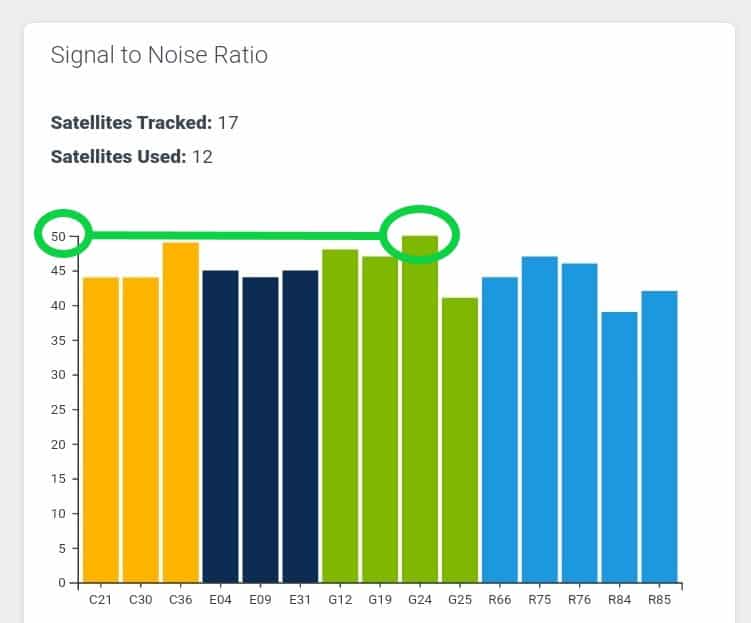The UNI-Connect dashboard shows many satellites, why can’t I obtain a FIX?
By the way, interested in digital surveying?
Read more about our UNI-GR1, an RTK GNSS Receiver. Digital surveying and performing stakeouts is now easier than ever. Available in a complete package and ready to use worldwide. Want to know more? Click here
Follow marXact on social media
In the background
The UNI-GR1 is always busy! The receiver of the UNI-GR1 calculates signals for each satellite in view, corrects it with NTRIP messages received from reference stations, or resolves other signal errors that need to be resolved before we can provide you with a fix. There are a lot of processes going on in the background and most of the hard work handles the UNI for you.
One of the things you can monitor yourself is the location you are in. This location is visualised in the Signal to Noise Ratio(SNR) in the UNI-Connect dashboard. It’s important to understand that satellite signals travel from space to earth. While the signals travel through every obstacle it meets on its way, the signals are getting weaker and weaker. When the signals arrive on earth, you as the surveyor can create unintentional new obstacles for the UNI-GR1, making the signal even weaker. The weaker the signal, the harder to get a good FIX position.
That’s why it’s important to have as many strong signals as possible, meaning to start up the UNI-GR1 and wait on a fix in an open place with a clear sky.
Signal to Noise Ratio (SNR)
In the UNI-Connect dashboard, we find the Signal to Noise Ratio. This tells us more about the signals received from satellites. A simple explanation of the Signal to Noise Ratio is just to see it as “signal strength”.
Looking at the chart down below, we see the signal strength received from every satellite. This ratio doesn’t look that good! Even though we receive quite some satellites, the strength isn’t very strong. Chances are this is caused by obstacles such as tree canopy, buildings or other obstacles. All these obstacles make the signals not strong enough to provide you with a precise and accurate FIX. The case of “more satellites” wouldn’t directly provide you with a better accuracy here, but the combination of a high SNR and Satellites used would get the job done.

So, in order to get a FIX and improve the positions, take a look around you and see to which location you can slowly move to improve the signal. Once you are more in an open spot, or a spot more open than you were before; the SNR should look like this;

Can I now get a FIX in these conditions?
Yes. Try to stand away from buildings and in an open location, with clear sky views. When you have a FIX, try to walk slowly to the preferred point for surveying or stakeouts. Try to not let anything interrupt the travel of the signal to the UNI-GR1. That means: not to be directly under a tree, inside, or in between skyscrapers.
There is more to it
The SNR is simply a visualisation of what is happening around you and a part of what affects a FIX. In order to get a full understanding, check out the article on the difference between float and fix or give us a call for assistance.
With UNI-Cloud & Support including remote assistance, we guide you through it or help you by changing some settings. Call the helpline at +31 (0)70 700 7917.
